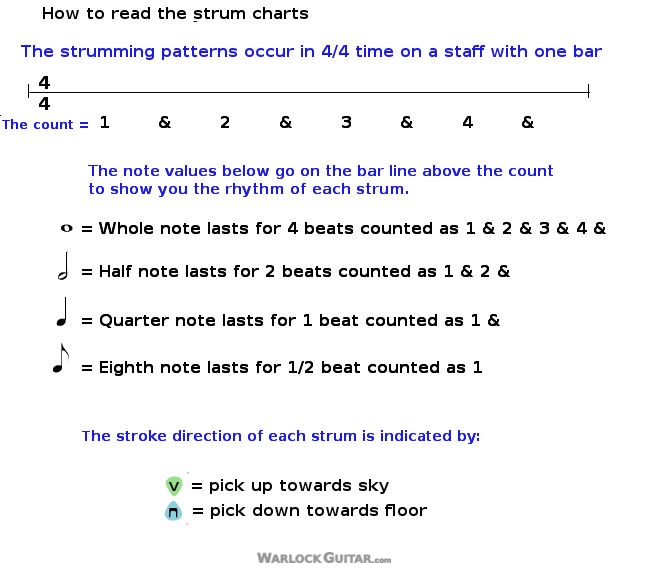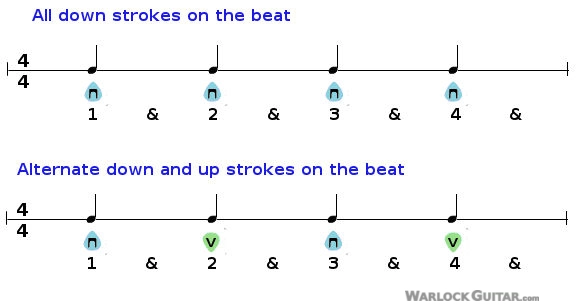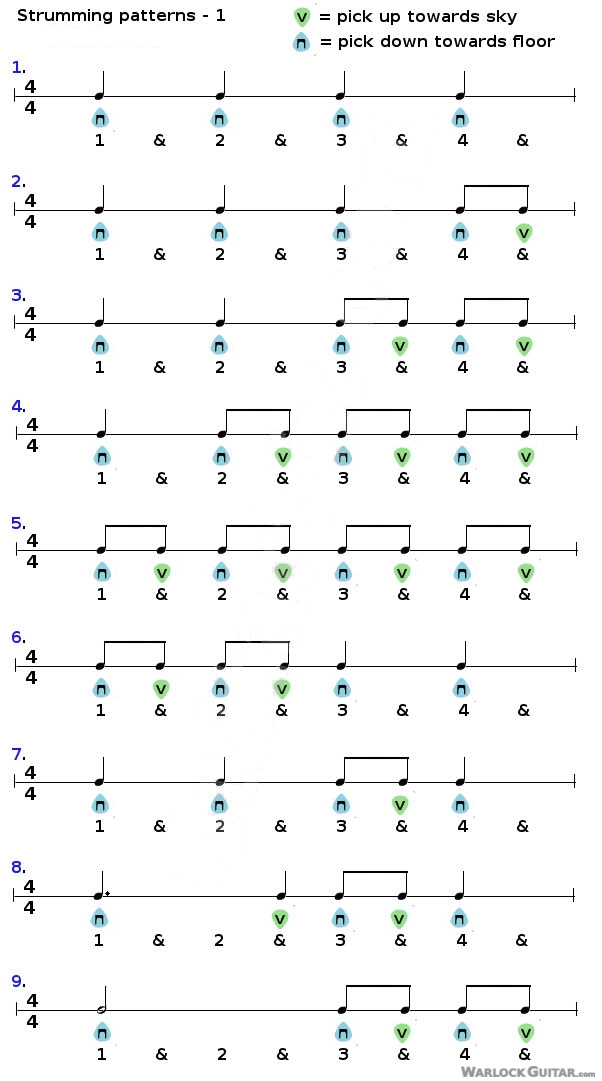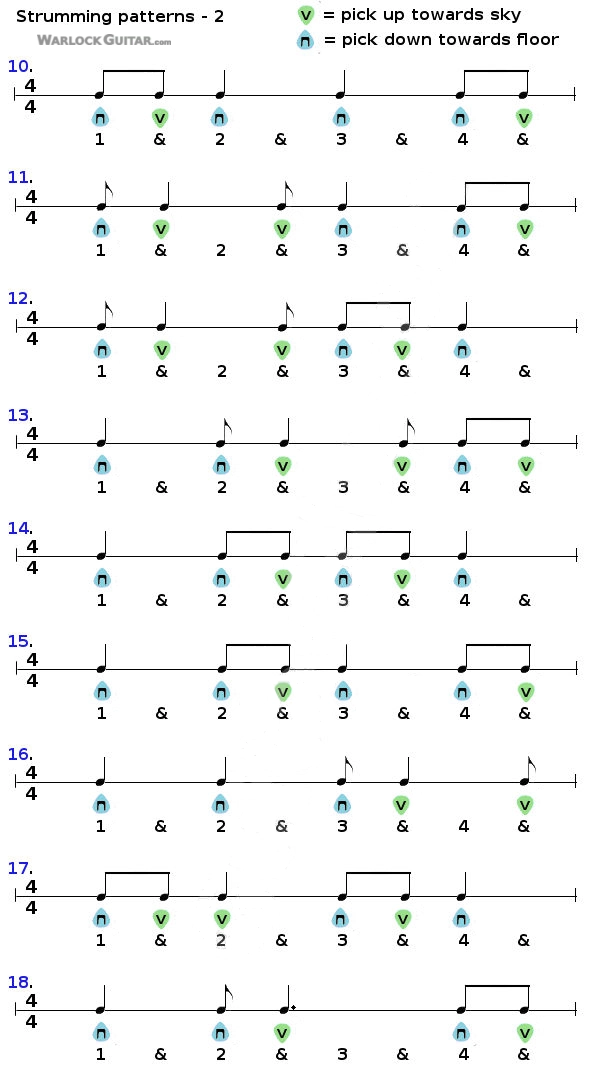...for beginners
Strumming patterns are different ways you can strum chords rhythmically on your guitar to bring life to your music and your chord changes. Here is a big list of strumming patterns every beginner guitarist should practice. You might not use all of these but being familiar with them can also help you when the time comes to create your own. Read my article on How to play guitar chords if you are new to strumming chords.
Why learn strumming patterns?
Besides helping to build your sense of rhythm, here are some other important reasons why you should learn strumming patterns.
* Strumming helps build hand coordination. * Learning strumming patterns is great for developing smooth chord changes. * Strumming in different ways can help you come up with song ideas.
How to read the rhythm charts
Before I get to the list of strumming patterns I want to give you a brief overview of the rhythm notation I used for the charts. All the patterns are written in 4/4 time which means there are 4 beats to a bar and a quarter note gets the beat.

Alternating strums
Most of the patterns listed below will have alternating down and up stroke strums. So to get ready for those I want to show you the difference between a pattern with all downward strums on each beat and a pattern with alternating down and up strums on each beat. Practice these patterns before moving on to the rest of them to ensure you have good down and up strum coordination.

The strumming pattern list
Here is a huge list of patterns for you to practice. You have already done the first one.


Tips for practicing strumming patterns
1. At first, try playing a single chord over all beats until you have mastered the patterns ( try with a C chord first). Then gradually substitute different chords in over each beat. Try the I IV IV vii chords of a key for example C, F, G and A chords. Get more keys in my 4 chord songs lesson. 2. Strum over the sound hole on an acoustic guitar or over the pickups on an electric guitar making sure all strings of each chord ring clearly. 3. Your strum arm should act as a fulcrum to evenly strum up or down strokes as smooth and as possible in both directions.
Create your own patterns
When the creative urge hits, you can use the blank rhythm staff below to write down strumming patterns you create. Just print out the image of the staff or copy it and paste it a few times into your favorite image editor to make a longer printable sheet.
